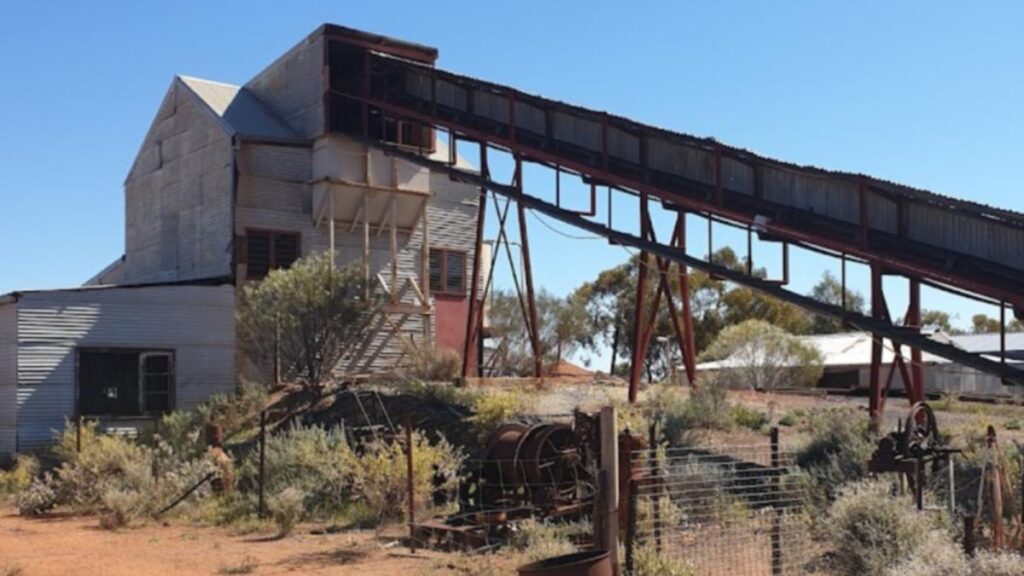Reach Resources has punched out another 5,800 ounces of shallow gold at its Murchison South project near Paynes Find. The new resource at the company’s Pansy Pit was confirmed by independent consultant Mining Plus and adds to the 61,300 ounces already banked at the Blue Heaven deposit at the project. The combined 67,000 ounces now make a compelling case for toll treating and early cashflows for Reach.
The Murchison South gold project is near Paynes Find, about 340km northeast of Perth.
The Pansy pit within the project contains 72,000 tonnes at a solid 2.5g/t gold for 5800 ounces of gold, while the Blue Heaven deposit contains 681,000 tonnes at and even better 2.8g/t gold for 61,300 ounces of gold.
Notably both resources kick off from surface making them good candidates for toll treatment. The Pansy inferred estimate has been derived solely on a historical data review undertaken by Mining Plus, with the data set being confined between surface and 60m depth for now.
With gold mineralisation extending from surface, Reach believes the shallow Pansy resource is potentially mineable via an open-pit mine design, particularly while the gold price remains buoyant at around A$5048. Importantly the optimised pit shell for the Pansy mineral resource estimate was created at what is now looking like a very conservative A$3,500 per ounce of gold.
Reach Resources CEO Jeremy Bower said: “This is a great result. Without spending a dollar on any drilling, we have added more gold ounces at our Murchison South Gold project and show the potential for further upside, as the Pansy Pit is open at depth and along strike. We are confident we can continue to grow the Murchison South Gold Resource above the current ~67,000 ounces via extensional drilling across both deposits.”
Importantly, the company views the Pansy deposit as evidence of a possible strike extension along the line of the Primrose Fault, particularly along the 480m run southwards to the Shamrock gold deposit and also to the Pansy North and Jacamar deposits which lie 300m and 500m north of Pansy, respectively.
During its data review, Mining Plus identified the Pansy North and Jacamar deposits as having significant potential for additional gold mineralisation with further drilling and the Pansy Pit itself is still open and may have more ounces to give yet.
Mining Plus attributed the potential at Pansy North and Jacmar to the mapped quartz veins arrayed at the deposits in association with the Primrose Fault, which would likely have been the principal conduit for mineralising fluids.
Similar potential for additional gold mineralisation was also indicated at the Shamrock deposit.
The JORC-compliant Blue Heaven inferred and indicated resource sits about 2km north of Pansy along the Primrose Fault, placing it about 1.3km south of the historic Payne’s Find mining settlement.
Prospector Thomas Payne made the first gold discovery in the area in 1911 and was granted free use of the state’s gold battery, established in the same year. Much of the historical gold production came from underground mines on the northern side of the Great Northern Highway.
Old Payne’s Find mining records indicate a production of about 60,000 tonnes of ore at a whopping average grade of 26g/t gold for about 57,000 ounces of the yellow metal.
Reach has launched a scoping study to evaluate likely development pathways and intends to undertake further exploration work to build on the encouraging outcome of its data reviews, which will likely include closer examination of its other walk-up drill targets near Blue Heaven and Pansy.
In addition to the scoping study, the company proposes to begin engaging with mining contractors and ore treatment players, the outcome of which just might be cashflows for the $8.75m market capped Reach.
Is your ASX-listed company doing something interesting? Contact: matt.birney@wanews.com.au

